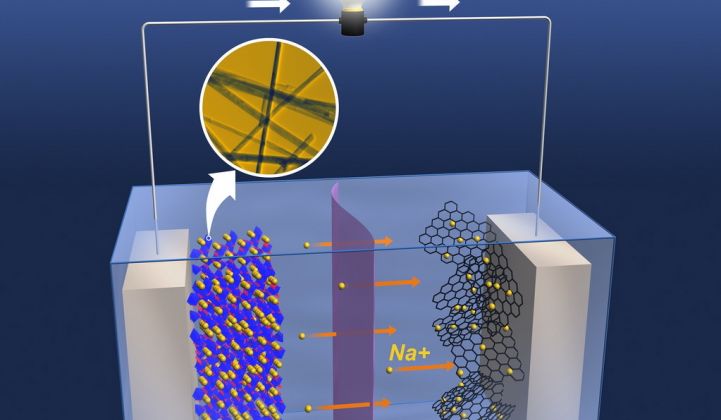This week has brought a few energy storage news items, both involving technologies that rely on good, old-fashioned air as a storage medium.
First up is Eos Energy Storage, a startup developing rechargeable zinc-air energy storage technology, which raised another $2.97 million in venture capital funding this week, according to Cleantech Group, which cited a regulatory filing.
The newest fundraising brings the Easton, Penn.-based startup’s total funding to $11.9 million out of a goal of $20 million. Eos raised $1.8 million in December, raised its total to $5.5 million later that month, increased that total to $5.9 million in March, and raised $1.25 million in May, according to reports.
Zinc-air is in common use as a primary (non-rechargable) battery technology, and offers the key benefit of relying on cheap and plentiful zinc as an ingredient, rather than the more expensive lithium. But the chemistry has struggled with technology issues that have thus far prevented it from being used for rechargeable batteries.
Those problems include the production of carbon dioxide that clogs air cathodes and the formation of dendrites on the battery anode that lead to battery failure, Eos President Steve Hellman said in a December interview.
“What Steven Amendola, our inventor, did was fundamentally redesign the chemistry of the battery,” Hellman told us, via using an electrolyte that doesn't form CO2 or anode dendrites, and doing away with the membrane used in other types of zinc-air batteries.
The startup had tested grid-scale prototypes for more than 2,000 cycles with no degradation, and were aiming at commercial batteries to last about 10,000 cycles -- all at a target cost of $1000 per kilowatt for a six-hour battery, or $160 per kilowatt-hour.
While Eos has targeted grid-scale storage as its first market, it’s also looking at electric vehicle applications, in which it could remove spent electrolyte from a car battery and refill it with new electrolyte. That could radically speed up the time it takes to “charge” electric vehicles.
Eos isn’t the only one proposing such a method -- 24M Technologies, a startup founded by MIT battery researcher and A123 System co-founder Yet-Ming Chiang, is promising lithium-ion-based batteries that use a semi-solid electrolyte that could also be replenished when spent, allowing quick recharging of EVs on the go.
Eos, which has not disclosed its investors, still has a way to go before its technology is commercially available, with plans to have its grid-scale battery ready in about two years and no hard target for its EV batteries as of yet.
While electrochemical batteries continue to make advances, we’ve also seen a lot of work on thermal energy storage, or using stored heat and cold to generate electricity when the grid needs it most.
One such technology from U.K.-based startup Highview Power Storage, which uses frozen air to store energy at grid scale, has just landed German industrial gas company Messer Group as a partner. Under the agreement disclosed Wednesday, Messer has agreed to license Highview’s technology for use in industrial gas plants.
Highview, which had raised £11 million ($17.4 million) of private investment as of March, has been running a 300-kilowatt, 2.5-megawatt-hour pilot plant at a Scottish & Southern power station outside London that’s feeding stored energy into the grid. The startup was targeting total costs of about $1,000 per kilowatt, or about $500 per kilowatt-hour of energy stored, and planned a 10-megawatt, 40- to 50-megawatt-hour facility as its next step, CEO Gareth Brett said in a March interview.
Highview’s system uses electricity to turn air into liquid nitrogen, and then pumps it through a system that uses ambient heat to allow the air to re-gasify, and thus expand to drive a series of expansion turbines that generate power.
While that process in itself has a low round-trip efficiency of about 50 percent, using waste heat from a nearby industrial plant can bring that up to 70 percent to 80 percent, Brett said. That could allow it to compete with low-cost energy storage technologies such as compressed air and pumped hydro, but without the physical constraints of building massive dams to store water or finding underground caverns to store compressed air.
Of course, the key to Highview’s approach is to have lots of industrial gases available to freeze and unfreeze. Messer, which operates about 70 cryogenic air separation plants in Europe, Asia and South America, plans to integrate Highview’s technology into its plants, and holds an exclusive license to use it in those settings, while leaving Highview free to develop projects that aren’t co-located or connected with industrial gas production.



